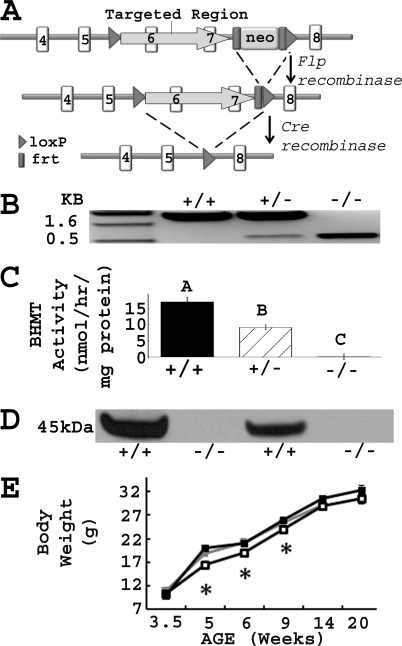FIGURE 1.
Confirmation of Bhmt−/− mice. A, Bhmt chimeric mice were generated using a gene targeting vector that removed exons 6 and 7 of the gene as described under “Experimental Procedures.” loxP, locus of X-over P1; frt, flippase recognition target; neo, neomycin cassette; flp, flippase recombination enzyme; cre, cyclization recombination enzyme. B, PCR analysis of genomic DNA isolated from Bhmt+/+, Bhmt+/−, and Bhmt−/− mice. The PCR product of the WT allele was 1600 bp, whereas the knock-out allele was 545 bp. C, hepatic BHMT activity was measured using a radiometric assay in Bhmt+/+ (black bar), Bhmt+/− (hatched bar), and Bhmt−/− (white bar) mice. Data are presented as mean ± S.E., n = 4–8 per group. Different letters differ significantly (p < 0.01) by analysis of variance and Tukey-Kramer HSD tests. D, BHMT protein in liver from Bhmt+/+ and Bhmt−/− mice were probed by Western blot analysis. The size of the BHMT protein is 45 kDa. E, body weights of Bhmt+/+ (black square), Bhmt+/− (gray square), and Bhmt−/− (white square) mice were measured using a scale from age 3.5 to 20 weeks old. Data are presented as mean ± S.E., n = 10–25 per group. *, p < 0.05, different from Bhmt+/+ by Student's t test.

